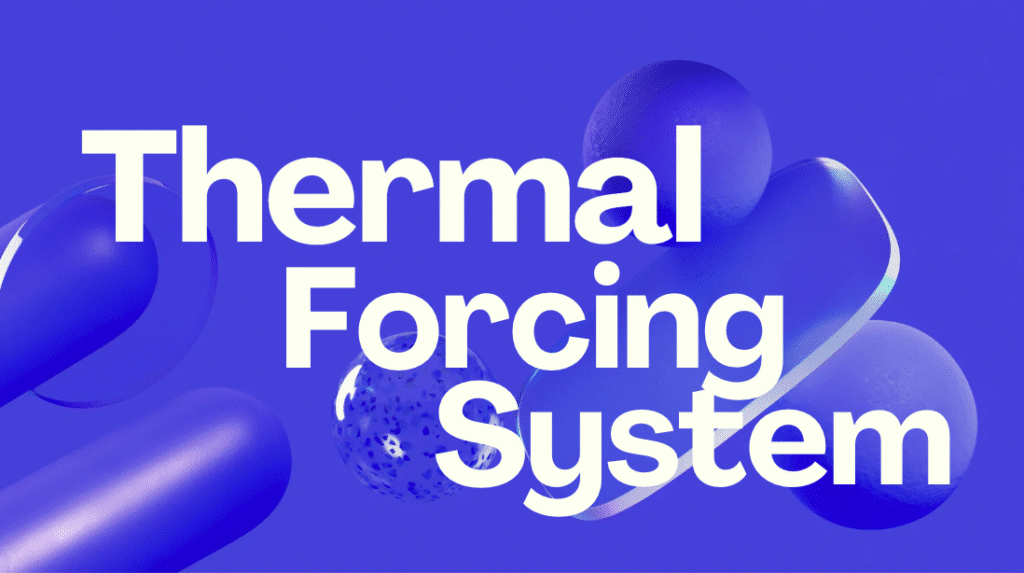In the high-stakes world of semiconductor reliability and functional assurance, the Thermal Forcing System is a cornerstone of precision testing. These systems are used to simulate real-world thermal conditions, enabling accurate validation of electronic components and integrated circuits. Whether you’re involved in semiconductor thermal testing, device characterization, or burn-in testing, understanding thermal forcing systems is critical.
Thermal forcing systems are increasingly essential in temperature cycling test systems, especially as devices become smaller and more sensitive. Using a thermal air stream system, these devices can rapidly subject components to extreme temperatures in a controlled environment—without the need for large environmental chambers.
In this guide, we’ll uncover the five key things you need to know about thermal forcing systems, their capabilities, applications, and why they’re indispensable in today’s QA and reliability workflows.
1. What Is a Thermal Forcing System and How Does It Work?
At its core, a thermal forcing system is a benchtop or integrated tool that delivers rapid heating and cooling through a directed air stream. These systems are capable of pushing temperatures as low as -80°C and as high as +225°C in just seconds, making them ideal for temperature forcing systems used in validation and production environments.
Unlike traditional ovens or thermal chambers, a thermal forcing system offers spot-level thermal control. The system directs thermal air through a flexible nozzle to a specific area, such as an exposed die or contact point on a device under test (DUT). This approach ensures localized temperature conditioning, which is particularly useful during device characterization where precision is critical.
➡ Learn more about how temperature forcing systems work.
2. Applications Across Semiconductor Testing and Validation
Thermal forcing systems have a wide range of applications across the semiconductor lifecycle:
Semiconductor Thermal Testing
One of the most common applications is in semiconductor thermal testing, where thermal stress is applied to assess a chip’s response to different operating environments. This is vital in automotive, aerospace, and industrial electronics where temperature variations are extreme.
Device Characterization and Performance Benchmarking
Thermal forcing is essential for device characterization, which involves evaluating how an electronic component behaves across a wide range of temperatures. Engineers can quickly identify failure thresholds or performance degradation using these systems.
Burn-In Testing and QA
In burn-in testing, components are subjected to high temperatures for extended periods to detect early-life failures. A thermal forcing system can complement this by enabling rapid pre-screening or post-burn-in thermal validation, offering faster turnaround and better insight.
3. Faster, More Efficient Than Environmental Chambers
Unlike bulky thermal chambers that condition entire environments, thermal forcing systems provide targeted thermal air streams that heat or cool specific areas in seconds. This results in significantly lower cycle times and operational costs.
Thermal Air Stream System vs. Traditional Chambers
A thermal air stream system uses high-flow, conditioned air to achieve precise thermal conditions. Benefits include:
- Mobility: Easily moved between stations or lab environments.
- Speed: Temperature transitions in seconds, not minutes.
- Accuracy: Fine-tuned thermal delivery to specific DUTs.
These advantages are crucial in environmental stress screening (ESS), where speed and precision can directly impact product development timelines.
➡ Example use case from ESPEC’s guide to air stream systems.
4. Enhancing Reliability Testing and Yield Optimization
A major benefit of using thermal forcing systems is the improvement in reliability testing. These systems allow engineers to simulate the most challenging use-case scenarios and validate the long-term viability of products.
In temperature cycling test systems, thermal forcing plays a pivotal role. It enables fast, controlled temperature shifts that replicate real-world thermal cycles, exposing potential points of mechanical or thermal failure.
Additionally, integrating a thermal forcing system with automated test equipment (ATE) allows for synchronized electrical and thermal testing. This combination significantly enhances test coverage and diagnostic capabilities during both development and production.
➡ Dive deeper into thermal-integrated TFS solutions.
5. The ROI: Why Every QA Lab Needs One
Thermal forcing systems offer excellent ROI for QA labs, R&D, and even in production settings. Their speed, accuracy, and efficiency significantly reduce time-to-market for new products, while improving test coverage and failure diagnostics.
Key benefits include:
- Reduced testing time: Achieve full thermal cycles in seconds.
- Higher yield: Detect issues early in the lifecycle, reducing post-market failures.
- Scalability: Ideal for small-batch testing or high-throughput screening.
As burn-in testing becomes more rigorous and semiconductor thermal testing standards rise, investing in a flexible, programmable thermal forcing solution is increasingly a necessity—not a luxury.
Vendor Spotlight: Sysmetric-TFS
At Sysmetric-TFS, advanced thermal forcing systems are designed to meet the evolving needs of semiconductor companies. With customizable systems capable of integrating with ATEs, flexible nozzles for various test points, and high reliability, Sysmetric-TFS supports high-precision validation, from post-silicon testing to reliability qualification.
Explore their range of tools that empower R&D, quality assurance, and high-volume testing labs.
Final Thoughts
In a world where thermal precision directly affects electronic reliability, thermal forcing systems are critical for success. From temperature cycling to burn-in and device characterization, they streamline testing workflows and enhance product quality.
Whether you’re building next-gen SoCs or testing power devices under extreme conditions, investing in a high-performance thermal forcing system is a strategic move for innovation and longevity.

